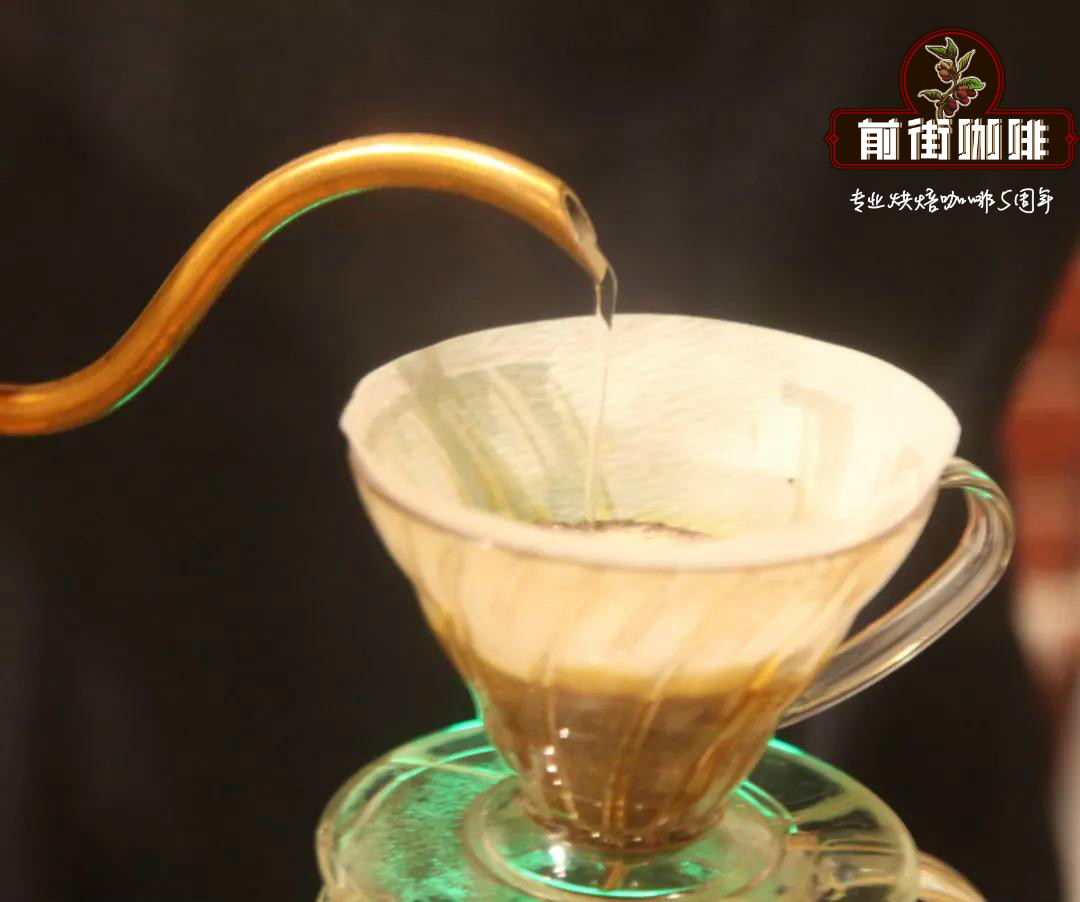The main characteristics of Yunnan Coffee Flavor the number of manors in the domestic producing areas of Yunnan coffee

Professional coffee knowledge exchange more coffee bean information please follow the coffee workshop (Wechat official account cafe_style)
In recent years, with the increasing demand for coffee at home and abroad, China's coffee industry has also made a new improvement. Perhaps in the eyes of most Chinese, Yunnan has always been the rural land of China or the capital of tea.
It also has one of the few regional advantages of coffee cultivation in China: the Tropic of Cancer runs through the province, so that a considerable part of its area is located in the "coffee growing golden belt". The geographical characteristics of altitude and latitude are proportional to the subtropical monsoon climate, which not only makes the soil rich in precipitation and sunshine, but also ensures larger daily temperature difference and smaller annual temperature difference. Combined with all these geographical advantages, Yunnan coffee has become the leader of Chinese coffee, and Yunnan has also become the main coffee producing area in China, accounting for 99% of the national output.
But it was not until the wave of boutique coffee came to China that Yunnan coffee began to be recognized by the world.
In 1984, Nestl é used Pu'er as an important coffee raw material production base.
In 2012, Starbucks opened a grower support center in Pu'er, Yunnan, and opened its first coffee origin store in Pu'er in 2018, followed by the launch of Yunnan Zhenxuan coffee beans in stores across the country.
The boutique coffee brand Seesaw Coffee sends professionals to Yunnan every October to help local coffee farmers cultivate coffee seedlings and regulate picking and handling.
More and more eyes begin to focus on the rural land of Yunnan. This time, we talked to a number of senior people in different fields of the industry-not only the staff of Yunnan Coffee Trading Center, but also representatives of Yunnan farmers, as well as baristas and bakers. In these diversified perspectives, we will show you the great changes of Yunnan coffee in recent years.
About ten years ago, when I told people about Yunnan coffee, many people would immediately ask, "does China also produce coffee?"
About five years ago, when I told people about Yunnan coffee, a large number of people would ask, "is there any good coffee in China?"
This article probably wants to answer these two questions.
Is coffee produced in China?
We all know that coffee trees are only suitable for growing in the tropics or subtropics.
In the zone between 25 degrees north and south latitudes, the temperature is between 15 ℃ and 25 mm, and the annual rainfall must reach 1500 Mel 2000 mm, and the rainfall time should be in line with the flowering cycle of coffee trees.
In countries in this region, we generally call them coffee belts or coffee zones.
There are more than 60 coffee producing countries in the world, most of which are located in this region.
However, not all the land located in this area can produce good coffee trees.
The main coffee producers in this zone are Brazil, Colombia, Ethiopia, Kenya, Vietnam, Indonesia and so on.
Some parts of China (Yunnan, Sichuan, Hainan, Guangdong, Guangxi, Taiwan, etc.) are also located in this geographical location, also meet the climatic requirements and altitude requirements of coffee growth, and objectively can produce coffee.
However, there is no such species as coffee in China's native plant atlas, and it has been proved that coffee was introduced into China 120 years ago.
The first person to introduce coffee was Taiwan. In 1884, a British tea merchant found that Taiwan's climate was very similar to that of Central and South America, so it should be suitable for growing coffee.
So the tea merchant introduced 100 coffee trees to Taiwan to plant, which opened the prelude to the development of coffee in China.
In 1893, English missionary Jingji introduced coffee in Ruili Jingpo area of Yunnan Province.
In 1904, coffee was introduced by French missionary Tian Deneng in Zhukula Village, Binchuan, Yunnan Province.
British and French missionaries introduced coffee purely to meet their own coffee needs, so there is no scale.
In 1908, overseas Chinese businessman Zeng Wangyuan brought back coffee seeds from Malaysia and planted about 150000 coffee seeds in Danxian County, Hainan Province.
In 1933, Chen Xianzhang, an overseas Chinese businessman, brought back coffee seeds from Indonesia, established two farms in Fushan and other places in Hainan, and was the first to realize the industrialization of coffee.
However, the real large-scale production of coffee in China was after the liberation.
At that time, China was in the honeymoon period with Big Brother of the Soviet Union and socialist brothers in Eastern Europe. These countries had the tradition and habit of drinking coffee, but they were not coffee producing areas.
In order to meet the needs of Eastern European countries and the Soviet Union in the 1950s, Yunnan Province promoted the development of Lujiangba coffee in Baoshan City, making it the first Arabica coffee production base in the country.
The coffee planting industry in Yunnan rose at a high speed in the 1950s.
However, three years of natural disasters caused the central government to shift the focus of agriculture to the food issue and put forward the slogan of "taking grain as the key link". Coupled with the deterioration of Sino-Soviet relations, coffee was unsalable in the international market.
During the Cultural Revolution, coffee was equated with a capitalist way of life, and the domestic market was unsalable. This caused Yunnan coffee and even Chinese coffee to shrink for two decades from 1961 to 1981.
Since the 1980s, with the deepening of reform and opening up, China's coffee industry has slowly recovered.
In 1980, four ministries and one agency held the first national coffee conference in Baoshan, Yunnan, and farmers in Yunnan were enthusiastic about growing coffee. In 1988, Nestl é set up a joint venture in China.
In 1989, Nestl é entered Simao, Yunnan Province (today's Pu'er) and signed a 14-year long-term purchase and sales contract with the Simao municipal government, promising to buy coffee at the spot market price in the United States and provide technical support.
Because of the entry of Nestl é, the planting area of Simao coffee in Yunnan has expanded nearly 16 times to 182000 mu in the past ten years.
In 2010, Starbucks Coffee signed a cooperation agreement with the Yunnan provincial government to set up coffee bean farms in China.
At the end of 2016, Yunnan Coffee Trading Center changed its name to Yunnan International Coffee Trading Center, aiming at the whole world.
As of 2016, China's coffee planting area was 120200 hectares, with an annual output of 141100 tons (including Taiwan). Yunnan's acreage and yield are more than 98%.
The above answers the question "Coffee made in China"
Is there any good coffee in China?
To answer this question, let's first talk about the distribution of coffee varieties in China:
Coffee cultivation in Yunnan, Sichuan and Taiwan is mainly Arabica, while coffee cultivation in Hainan is mainly Robusta.
Yunnan coffee is to carry the banner of Chinese boutique coffee, coffee varieties are mainly Arabica species, in more detail, more than 90% is Catimor.
Let's first take a look at the consanguinity of Timor, which is a cross between Timor and Caturra.
Timo is a cross between Arabica and Robusta, and it can be called "Arabica bean" because its chromosomes are 44 of Arabica rather than 22 of Robusta.
In 1959, the Portuguese moved Kaddura of Brazil to East Timor to cross with Timo, who was of Robusta descent, and successfully developed a disease-resistant and highly productive Katimo.
Between 1970 and 1990, leaf rust affected coffee producing countries around the world. With the help of international organizations, various producing countries vigorously promoted Katimo species to fight leaf rust and increase production capacity.
Cartimo coffee is characterized by low tree height and large fruit.
Although the Katimo species inherits the advantages of Robusta's strong disease resistance, it also inherits the gene with poor flavor.
Therefore, Yunnan beans can only be medium-and low-grade commercial beans for a long time.
Over the decades, many botanists have studied the improvement of katimo varieties, and dozens of new varieties have been cultivated. The quality of Yunnan coffee has also improved by leaps and bounds.
Since 2014, Ted Lingle, co-founder of the American Fine Coffee Association (SCAA) and the Coffee quality Research Institute (CQI), began to pay attention to Yunnan coffee. First, as a judge of the Pu'er raw bean contest, and then as a senior consultant of Yunnan Coffee Trading Center, he devoted himself to docking with SCAA and CQI from the source. He proposed that "the foundation of fine coffee lies in curry farmers", which really promoted the upgrading of Yunnan boutique coffee.
In the two Yunnan raw bean competitions in 2016 and 2017, the quality of Yunnan coffee has reached a new level every year, which is impressive.
The score of the champion of the second Yunnan Coffee Raw Bean Competition in 2017 broke last year's record of 85.5455, with the top 12 all above 80.
What is the concept of 80 points? 80 points in the definition of "boutique threshold" among all coffee makers, I am not targeting anyone, but maybe the beans used in many stores have not reached this baseline.
It is also interesting to say that there are also some local varieties of raw beans, such as Rosa, Itsuka, Bourbon, etc., but they can not shake Katimo's dominant position, and it also reflects Yunnan's success in adapting to the improvement of Katimo, and at the same time, it can also see the development potential of other varieties.
This answers the second question: China, especially Yunnan, also has good coffee.
The first Banan coffee I tasted during the 2017 Shanghai Exhibition, very high quality sour fruit, sweet aftertaste.
At the global promotion meeting of "Open China: charming Yunnan World sharing" held on February 20, 2017, Foreign Minister Wang Yi praised Yunnan's Pu'er tea and coffee, especially Hougu Coffee. "it's the best coffee I've ever had in many countries all over the world."
On April 22nd, the Yunnan International Coffee Trading Center will open an auction of the top 12 winners of the raw bean competition at the SCA boutique coffee show in Seattle, sharing with Ted Lingle's words for Yunnan coffee-good coffee.
The above answers two questions:
China produces coffee and not only Yunnan and Taiwan.
Chinese coffee also has fine beans.
Important Notice :
前街咖啡 FrontStreet Coffee has moved to new addredd:
FrontStreet Coffee Address: 315,Donghua East Road,GuangZhou
Tel:020 38364473
- Prev

The method of Coffee production in Mexico an introduction to the manors producing organic coffee in Mexico
Professional coffee knowledge exchange more coffee bean information please follow the coffee workshop (Wechat official account cafe_style) Mexican coffee Chiapas │ triumphant manor original forest coffee origin: Mexico Chiapas (Mexico Chiapas) plantation manor: triumphant farmers cooperative coffee varieties: Typica,Bourbon, Mundo Novo planting altitude: 900-1750m raw beans
- Next

Brief introduction of Yemeni Coffee producing area how to brew Yemeni Coffee Madali Mocha
Professional coffee knowledge exchange more coffee bean information please follow the coffee workshop (Wechat official account cafe_style) Yemeni coffee (Yemen Matari Mocha) "Mocha,Moka,Moca,Mocca" is so famous that instant coffee used to be named after it. Many of Starbucks' best-selling drinks also contain the word mocha.
Related
- Does Rose Summer choose Blue, Green or Red? Detailed explanation of Rose Summer Coffee plots and Classification in Panamanian Jade Manor
- What is the difference between the origin, producing area, processing plant, cooperative and manor of coffee beans?
- How fine does the espresso powder fit? how to grind the espresso?
- Sca coffee roasting degree color card coffee roasting degree 8 roasting color values what do you mean?
- The practice of lattes: how to make lattes at home
- Introduction to Indonesian Fine Coffee beans-- Java Coffee producing area of Indonesian Arabica Coffee
- How much will the flavor of light and medium roasted rose summer be expressed? What baking level is rose summer suitable for?
- Introduction to the characteristics of washing, sun-drying or wet-planing coffee commonly used in Mantenin, Indonesia
- Price characteristics of Arabica Coffee Bean Starbucks introduction to Manning Coffee Bean Taste producing area Variety Manor
- What is the authentic Yega flavor? What are the flavor characteristics of the really excellent Yejasuffi coffee beans?

